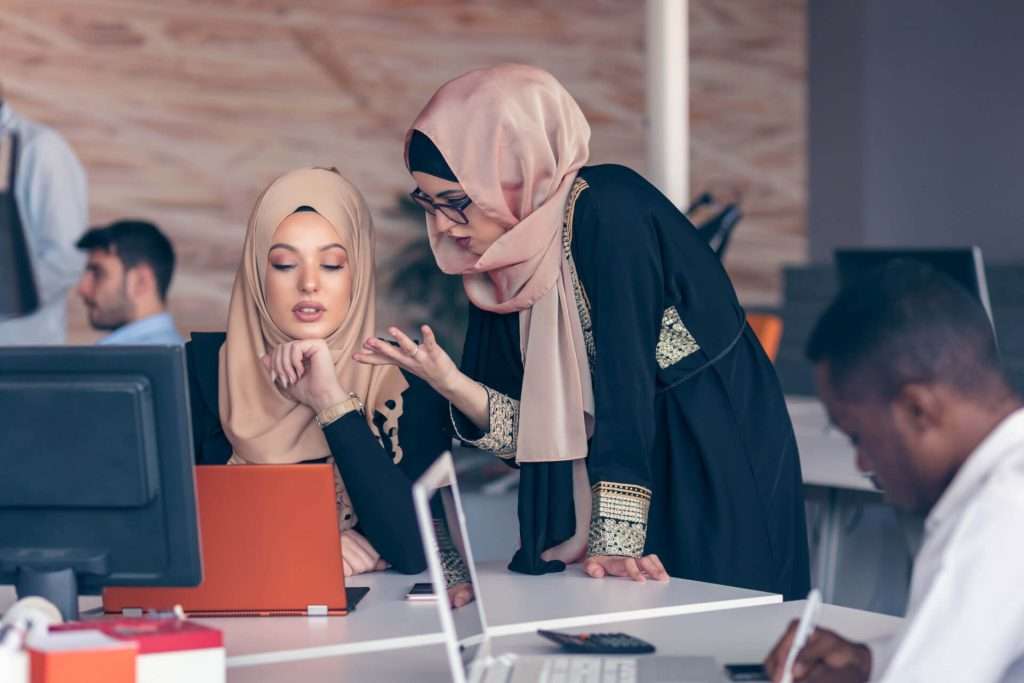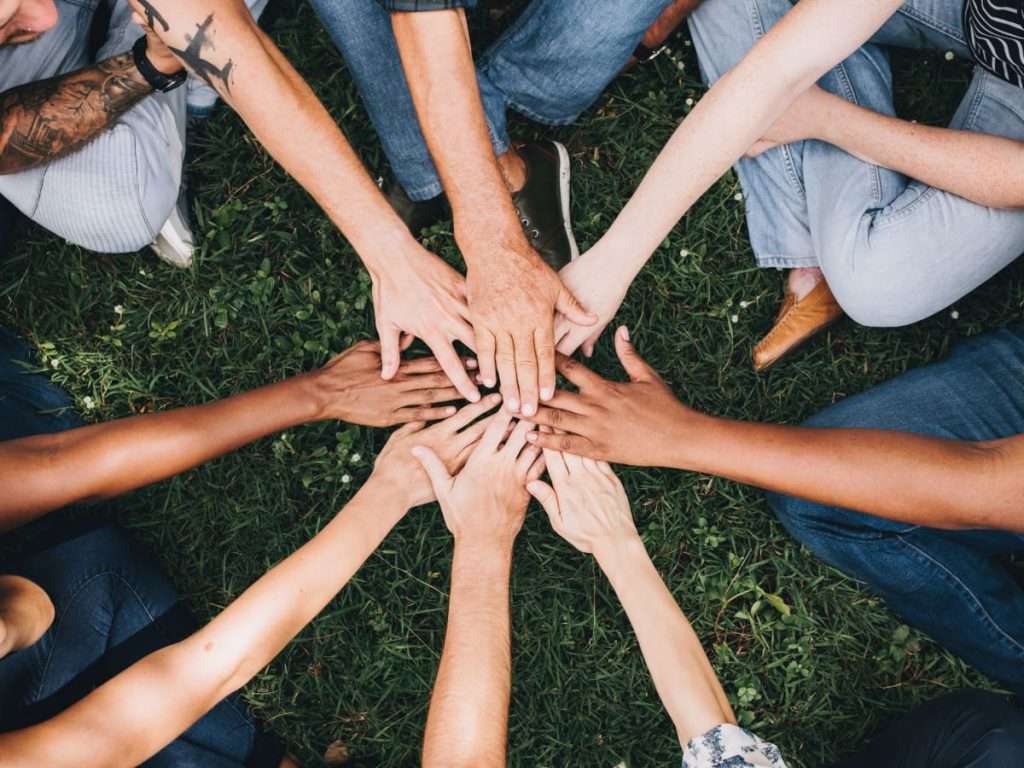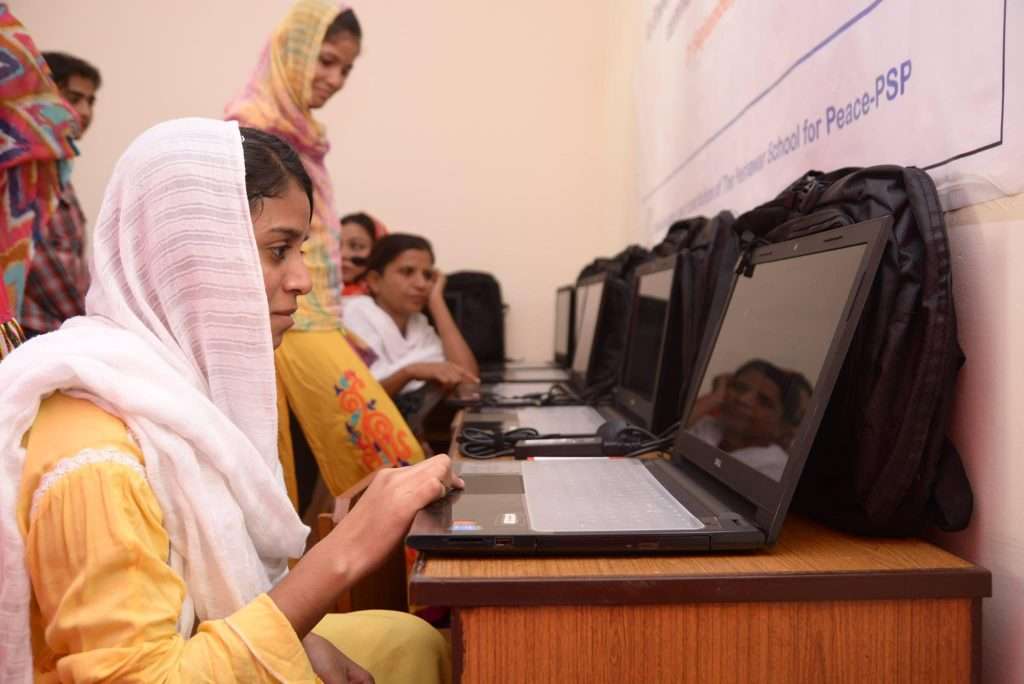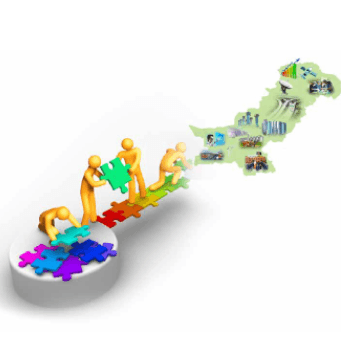FOCUS AREA - Youth Development

Education
Pakistan is among the lowest spenders on education in South Asia. Pakistan's Constitution requires "free and compulsory education to all children" aged five to 16. However, universal, high-quality education has several hurdles. What is clear is that the imbalance in educational infrastructure prevents millions of children from attaining an education. AEPAM estimates that approximately 6.5 million 10 to 12-year-olds and 11.3 million 13 to 16-year-olds in Pakistan are out of school.

Employment
Pakistan’s annual GDP growth rate was 4.94 per cent, on average, between 1952 and 2018. This is far lower than rates in other developing economies, such as India or China. While macroeconomic stabilization is regarded as a medium- to long-term fix, the problem of Pakistan’s growing young population is immediate. Therefore, immediate extraordinary efforts are needed, beyond waiting for long-term economic stabilization. Crucially, external players – including the private sector and development partners – will have to join hands with the public sector, pooling their expertise and resources to unleash the immense potential of Pakistan’s youth.

Entrepreneurship
More than 90 per cent of the jobs in Pakistan are created by the private sector, making employment creation highly sensitive to economic performance. Entrepreneurship will be vital to bridge gaps in the demand for, and supply of, jobs. Young Pakistanis are clearly keen to excel as entrepreneurs. In 2019, they propelled the country among the top destinations offering freelance services, with Pakistan’s placing fourth on Payoneer’s Global GigEconomy Index.

Education
Pakistan has one of the lowest literacy rates in the world and the second-largest population of children not in school (22.8 million). Article 37 B of the Constitution of Pakistan says, “Remove illiteracy and provide free and compulsory secondary education within a minimum possible period.” The current literacy rate in Pakistan is 62.3″ which indicates that an estimated 60 million Pakistanis are illiterate.

Employment
Pakistan possesses the ninth largest labor force globally, with an influx of nearly four million young individuals reaching the age of employment annually. According to the 2022 statistics by the Pakistan Institute of Development Economics, the current unemployment rate among the youth stands at over 31 percent. This demographic comprises of 51 percent females and 16 percent males.

Entrepreneurship
In 2020, when the economy was declining, 77 million dollars were invested in Pakistani startups. After just eight months into 2021, investments in startups surpassed $228 million. The significance of entrepreneurship resides in its capacity to bridge the gap between demand and supply of the job market. Establishing a regulatory framework that is more conducive to the growth of youth entrepreneurship is imperative.

Engagement
UNDP estimates that Pakistan’s young population is one of the largest in history, with 68% of the population under 30 and 27% between the ages of 15 and 29. According to UNICEF, Pakistan ranks poorly on the Youth Progress Index due to social exclusion, limited personal freedom, and limited internet access. This requires youth participation in civic and political life, economic empowerment, and resilience-building roles.

Skills and Training
As per the data provided by UNICEF, the current enrollment of students in Technical and Vocational Education and Training (TVET) in Pakistan is 433,000. A population of 18 million young individuals needs to be more engaged in education, employment, or training. The government’s attention towards lifelong learning in skill training needs to be improved. Additionally, focusing on lifelong learning, retraining, and digital skills, TVETA must prioritize 21st-century skills.

Leadership & Decision Making
The Youth of Pakistan have a great deal of potential and are as energetic and ardent as the youth of any other nation in the region and beyond. The provincial government delegates authority to the local governments, enabling them to address the requirements of the youth within their respective jurisdictions. Student councils and local governments are also important platforms for youth to become involved at an early age.

Mental & Physical Health
Mental health challenges negatively impact the physical health of the youth in the country. A significant proportion of Pakistan’s population, primarily young individuals, suffer from physical and mental health disorders, exceeding 90 million. Mental health departments exhibit a lack of consideration toward mental illness. Mental health, sexual and reproductive health, and information services must be accessible to young people.

Engagement
Given the size of Pakistan’s young population and its projected growth, it is important to include the voices of young people in policies and initiatives, especially those that impact them. Engagement, as Pakistan’s last National Human Development Report puts it, “is not simply an end itself but also the means to an end, towards an informed, engaged and responsible citizenry in control of the decisions that affect their lives.”

Skill Training
Low skills perpetuate poverty and inequality. According to recent statistics, a staggering 32.4 million individuals in Pakistan who fall under the youth demographic are currently not enrolled in any educational institution, nor are they employed or undergoing any training. It is important to offer young individuals not enrolled in formal education a chance to receive training, enhance their skills, and obtain supplementary education.

Leadership & Decision Making
The proportion of young people in Pakistan is expected to keep rising until 2030. Whether this youth bulge becomes a game-changing asset or a nightmarish liability depends on how governments deal with it. As of now, there is no effective policy to manage and channelize youths’ energies for positive social and economic outcomes. In effect, a rudderless young population is left to fend for itself.

Mental & Physical Health
64% of Pakistan's youth are under 30. The country of mostly youth is facing tremendous mental issues that are destroying their physical health too. This is leading them towards wrongdoings like taking drugs or ultimately to suicide. Adolescents and youth must have access to quality and safe health services, including sexual and reproductive health and mental health services and information, through community and techbased innovation initiatives.

Constitution of Pakistan
The Constitution of Pakistan has incorporated provisions about the right to free & compulsory education in multiple Articles. Article 25A of the constitution highlights the fundamental right to education. The state must ensure that all children between the ages of five and sixteen receive free and compulsory education, as determined by law. Pakistan has officially endorsed the Universal Declaration on Human Rights (UDHR). Article 26 (1) of the UDHR recognizes that everyone has the right to education. Primary education must be accessible. Nevertheless, ratified international agreements in Pakistan do not have the force of law and must be implemented through legislative means.

Pakistan Vision 2025
Pakistan Vision 2025 aims to expand education levels and improve education quality substantially. A significant goal of Pakistan Vision 2025 is to raise the primary school enrollment and completion rate to 100% and the literacy rate to 90% by focusing on improving access to and the quality of Primary Education. Furthermore, it includes bringing the primary and secondary gender parity index to 1 and doubling the percentage of women in the labor force from 24% to 45%. To create a knowledge-based economy, the plan asks for a significant increase in public spending on higher education from 0.2% to 1.4% of GDP and a substantial increase in enrollment from 1.5 million to 5 million.

Sustainable Development Goals 2030
Sustainable Development Goal 4 (SDG 4) is about quality education. SDG4 seeks “inclusive and equitable quality education and to promote lifelong learning opportunities for all.” SDG 4 has ten education-related goals. Seven of these goals describe the expected results, while the remaining three explain the way to achieve them. The ten goals include Universal Primary & Secondary Education, Early Childhood Development and Universal Pre-primary Education, Equal Access to Technical/Vocational and Higher Education, Relevant Skills for Decent Work, Gender Equality and Inclusion, Universal Youth Literacy, Education for Sustainable Development, Global Citizenship, Effective learning environments, Scholarships, and Teachers & Educators.

Constitution of Pakistan
The significance of protecting the younger generation and guaranteeing the preservation of their entitlements is emphasized in various provisions of the Constitution of Pakistan. However, the youth continues to face precarious circumstances due to insufficient or poorly enforced legislation. Pakistan has ratified the United Nations Convention on the Rights of the Child (CRC), underscoring the involvement of youth. Youth participation is significant because it involves young people and youth organizations across national and international borders.

Pakistan Vision 2025
Pakistan Vision 2025 aims to utilize and focus Pakistan's massive youth populace on unlocking its economic potential. Through the Prime Minister's Youth Program, the government provides young people with skills, training, and access to capital. Youth entrepreneurship must be fostered further. The nationwide creation of youth hostels will encourage tourism and national integration. Internships and career guidance will aid youth in their transition to the workforce. A network of sports areas and recreational amenities will be built to channel young people's energy.

Sustainable Development Goals 2030
Youth is a major force for sustainable Development and a key agent for social change, economic growth, and technological innovation. While all the Sustainable Development Goals are critical to youth, education, and employment are fundamental to overall youth development. Decent Work and Economic Growth (SDG 8) is an interesting goal because of the direct nature of its relationship to youth empowerment. The youth cannot be empowered if they cannot fend for themselves and survive the economic realities of the times. they operate in.

